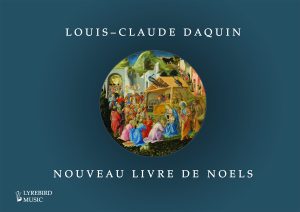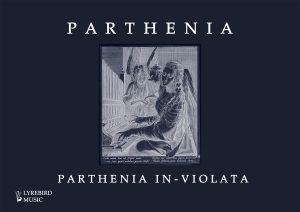LBMP–026: Jehan Titelouze – Hymnes de l’église & Le Magnificat
€43.58 – €55.51 (+ VAT for EU customers)
ISMN: 979-0-706670-54-6 (Hardback) | 979-0-706670-55-3 (Wire)
251 pages
Edited by Jon Baxendale
- A new edition of Jehan Titelouze’s Hymnes de l’église (1623) and Le Magnificat (1626)
- Full background notes with an examination of aspects of performance practice
- Music arranged for easy page-turning
- Plainsong hymns and Magnificat tones for performance within a liturgical setting.
- Three available formats
- Colour hardback cover with a matt finish (choice on checkout)
- Wire-bound with soft colour cover (choice on checkout)
- Tablet (PDF – one download available for 5 days)
Prices vary according to your needs. Please first choose the format you require.
Jehan Titelouze, organist and canon at Rouen Cathedral, composed his two books of alternatim organ versets in 1623 and 1626. Published by ‘seul imprimeur du Roy’, Pierre Ballard, they constitute the first known publication of organ music in France after Pierre Attaingnant’s books of the 1530s. The 1623 publication, Hymnes de l’église, contains settings of the twelve principal hymns of the church year, while its successor provides settings of Le Magnificat in each of the eight church tones. Titelouze’s erudite polyphonic style was not to be matched by later composers in their publications, though several drew upon his examples in their own work. In a new critical edition for Lyrebird Music, editor Jon Baxendale assess Titelouze’s music, discusses performance issues concerning the notation, ornamentation and registration, and scrutinises Titelouze’s essays on his music, which discuss his style, counterpoint and musical philosophy. Included as appendices are the plainsong hymns and Magnificat tones for performance within a liturgical setting.
Organists’ Review: June 2022
Early Music Reviews: May 2022
The latest in the enterprising range of music editions from Lyrebird Music features the only known organ publications of Jehan Titelouze (c1562-1633), organist at Rouen Cathedral and generally considered to be the founder of the French organ school. He composed his two books of organ versets in 1623 and 1626. The 1623 Hymnes de l’Église pour toucher sur l’orgue, avec les fugues et recherches sur leur plain-chant was the first published collections of organ music in 17th-century France, and the first since the 1530s. It contained sets of three or four verses for each of the twelve major hymns of the church year. The 1626 Le Magnificat ou Cantique de la Vierge pour toucher sur l’orgue suivant les huit tons de l’Église included settings of eight Magnificats in all eight church modes, each with seven verses. They both used the alternatim format with organ (odd-numbered) verses alternating with the even-numbered verses which would have been sung by a cantor or a choir.
Titelouze’s two volumes are part of an important group of Europe-wide organ publications during the 1620s from such composers as Manuel Rodrigues Coelho, Francisco Correa de Arauxo, Girolamo Frescobaldi, and Samuel Scheidt, composers working during the closing decades of the Renaissance era and the emerging Baroque style. Titelouze’s writing was strictly within the late Renaissance polyphonic style, in stark contrast to the composers of the later French Baroque school that culminated in Couperin and Nicolas de Grigny in the closing years of the 17th century.
This very welcome critical edition is important not just for the impressively clean text but, in particular, for the important introductory text by the editor Jon Baxendale. This casts much-needed light on this frequently misunderstood (or even ignored) composer, not least in separating his composition style and use of the organ from the better-known French ‘Classical’ school that developed in the mid-1600s. Although his own organ in Rouen Cathedral has some familiarity with the later French organ style, he cautioned against using the registrations that would become commonplace in the later French Classical School – a confusing term, as it doesn’t relate to the musical Classical period, which started as the French Baroque organ, arguably, approached its decline.
Jon Baxendale’s introduction includes a sensible translation of Titelouze’s own introduction to his two volumes, along with the original French. This is essential reading for anybody who wants to play or understand these monumental publications, along with various other performance issues covering notation, ornamentation, registration, and Titelouze’s style, counterpoint and musical philosophy. My only quibble with the Introduction is the very small typeface, unlike the other Lyrebird editions I have reviewed. This is particularly frustrating as there are five completely or nearly empty pages just before the introduction that could have been used to spread the text out over more pages in a bigger font. Appendices include the plainsong hymns and the eight Magnificat tones for alternatim performance within a liturgical setting.
The musical text of Titelouze’s original publications is remarkably accurate, so there is little need for editorial comments. Bearing in mind my comments on the size of the introduction, the musical text is beautifully clear and a sensible size – an important factor for organists as the music can sometimes be some way away from the player, particularly on French organs, which often have four manuals. There are two options for the type of binding: hardback or wire-bound with a soft cover. I have found the hardback editions perfectly usable on the music desk.
Andrew Benson-Wilson
Early Music Reviews
Your Shopping Cart
Archives
Categories
Recent Posts
- Choir & Organ Magazine August 22, 2022
- Keith Harrington August 22, 2022
- Marie-Louise Langlais August 22, 2022
- James Kibbie August 22, 2022
Categories
- Testimonial (4)
- Uncategorized (1)




